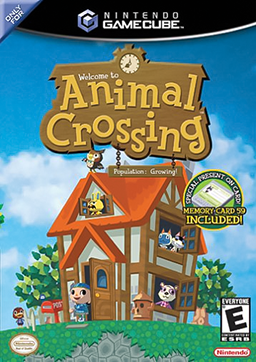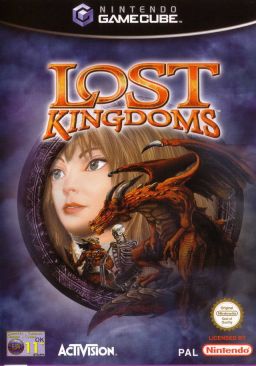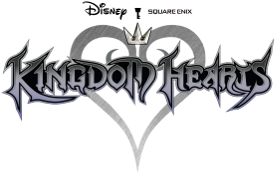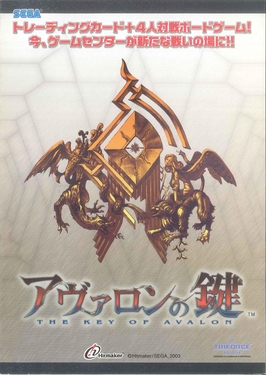
The GameCube is a home video game console developed and marketed by Nintendo. It was released in Japan on September 14, 2001, in North America on November 18, 2001, in Europe on May 3, 2002, and in Australia on May 17, 2002. It is the successor to the Nintendo 64 (N64) and the predecessor to the Wii. As a sixth-generation console, the GameCube primarily competed with the PlayStation 2 and the original Xbox.
Xenosaga is a role-playing video game series developed by Monolith Soft and primarily published by Namco. Forming part of the wider Xeno metaseries, Xenosaga is set in a science fiction universe and follows a group of characters as they face both a hostile alien race called the Gnosis and human factions fighting for control of the Zohar, an artifact connected to a god-like energy called U-DO. Gameplay across the series is similar, with the characters being guided through a linear narrative and fighting enemies using a turn-based combat system. The party fights both on foot and in a variety of mechs.

Animal Crossing, stylized as Welcome to Animal Crossing, and known in Japan as Dōbutsu no Mori+, is a 2001 social simulation game developed and published by Nintendo for the GameCube. It is the first game in the Animal Crossing series, and is also an enhanced version of the Nintendo 64 game Dōbutsu no Mori, which was only released in Japan earlier the same year, and was followed by another edition, Dōbutsu no Mori e+, in 2003.

Tony Hawk's Underground is a 2003 skateboarding video game and the fifth entry in the Tony Hawk's series after Tony Hawk's Pro Skater 4. It was developed by Neversoft and published by Activision in 2003 for the GameCube, PlayStation 2, Xbox, and Game Boy Advance. In 2004, it was published for Microsoft Windows in Australia and New Zealand as a budget release.

True Crime: Streets of LA is a 2003 open world action-adventure video game developed by Luxoflux and published by Activision for GameCube, PlayStation 2 and Xbox in November 2003, for Microsoft Windows in May 2004, and by Aspyr for Mac OS X in March 2005. A mobile phone adaptation was released in November 2004. The game tells the story of Nicholas Kang, an uncompromising LAPD detective who is recruited into the Elite Operations Division in order to investigate a series of bombings in Chinatown. As he delves further into the case, he discovers it may be connected to the disappearance of his police-officer father twenty years previously. The game features a 240-square-mile (622 km2) re-creation of a large part of Los Angeles, including most of Beverly Hills and Santa Monica, with most street names, landmarks and highways reproduced accurately.

Tony Hawk's Pro Skater 3 is a 2001 skateboarding video game and the third installment in the Tony Hawk's series. It was developed by Neversoft and published by Activision under the Activision O2 label in 2001 for the PlayStation, PlayStation 2, Game Boy Color and GameCube. In 2002, it was published for the Xbox, Game Boy Advance, Microsoft Windows, Mac OS, and the Nintendo 64. It was the final official release for the Nintendo 64, the first game released for the PlayStation 2 supporting online play and was a launch title for the GameCube in North America.

Call of Duty: Finest Hour is a first-person shooter video game developed by Spark Unlimited and published by Activision for GameCube, PlayStation 2, and Xbox. It is the first console installment of Call of Duty.

Kingdom Hearts: Chain of Memories is an action role-playing video game co-developed by Square Enix and Jupiter, and published by Square Enix in collaboration with Disney Interactive in 2004 for the Game Boy Advance. The game serves as an intermediary between the two larger-scale PlayStation 2 games in the Kingdom Hearts series. It was one of the first GBA games to incorporate full motion video (FMV).
1999 saw many sequels and prequels in video games, such as Heroes of Might and Magic III, System Shock 2, Legacy of Kain: Soul Reaver, Final Fantasy VIII, Age of Empires II, Crash Team Racing, Spyro 2: Ripto's Rage!, Grand Theft Auto 2, Resident Evil 3: Nemesis, Chrono Cross, Unreal Tournament, Pokémon Gold and Silver, and Donkey Kong 64, along with new titles such as Super Smash Bros., Silent Hill, Syphon Filter, Driver, EverQuest, Homeworld, Tony Hawk's Pro Skater, and Planescape: Torment.

Klonoa 2: Lunatea's Veil is a platform game developed and published by Namco for the PlayStation 2 in 2001. It is the direct sequel to Klonoa: Door to Phantomile (1997) for the PlayStation.

Lost Kingdoms is a 2002 action role-playing game developed by FromSoftware and published by Activision. The game was released in Japan in April, in North America in May, and in Europe in August. Lost Kingdoms is a card-based action role-playing game where battles are fought in real-time. A sequel, Lost Kingdoms II, was released in 2003.

Kingdom Hearts is a series of action role-playing games created by Japanese game designers Tetsuya Nomura and Shinji Hashimoto, being developed and published by Square Enix. It is a collaboration between Square Enix and The Walt Disney Company, and is under the leadership of Nomura, a longtime Square Enix employee.

Digimon Digital Card Battle, originally released in Japan as Digimon World: Digital Card Arena, is a video game based on the Digimon Collectible Card Game for the PlayStation. It was developed by BEC and published by Bandai, and was first made available in Japan in December 2000, with English releases in North America and Europe arriving in June 2001 and July 2002, respectively.

Disney Sports Skateboarding is a pair of 2002 sports video games released by Konami, one for the GameCube, and the other for the Game Boy Advance.

Kelly Slater's Pro Surfer is an extreme sports video game developed by Treyarch and published by Activision under the Activision O2 label. The game was endorsed by veteran surfer Kelly Slater and released for Game Boy Advance, GameCube, PlayStation 2 and Xbox in 2002, and for Microsoft Windows in 2003. To coincide with the game, Slater appeared as an unlockable character in the 2001 skateboarding video game Tony Hawk's Pro Skater 3, complete with surfboard.

Mega Man Star Force: Pegasus, Mega Man Star Force: Leo, and Mega Man Star Force: Dragon are 2006 action role-playing video games developed and published by Capcom for the Nintendo DS handheld video game console; combined, they are the first game in the Mega Man Star Force series, a sub series of the greater Mega Man franchise—and a follow-up to the Mega Man Battle Network series. It takes place in the years of 220X, in which technology has advanced to the point where the world is now connected through EM waves. The game follows Geo Stelar, a fifth-grader in Echo Ridge who merges with an FM-ian named Omega-Xis after mourning the supposed death of his father.
Tony Hawk's is a skateboarding video game series published by Activision and endorsed by the American professional skateboarder of the same name. The series was primarily developed for home consoles by Neversoft with an annual release schedule from launch to 2007, until Activision transferred the franchise to Robomodo in 2008, who developed the franchise on a non-annual release basis until 2015 when Activision and Hawk's license expired, leaving the future of the series uncertain. In 2020, the series returned under Activision with a remake of the original two games in the series, with development handled by Vicarious Visions. The series has spawned a total of 20 games.

Avalon no Kagi, alternatively known as The Key of Avalon is an arcade game developed by Hitmaker and published by Sega on the Triforce arcade board. It is the third card arcade game by Sega, following World Club Champion Football and Mushiking: The King of Beetles. It is a combination of sugoroku style board game and combat trading card game. It was followed by a sequel called The Key of Avalon 2: Eutaxy Commandment which was updated as The Key of Avalon 2.5: War of the Key.















